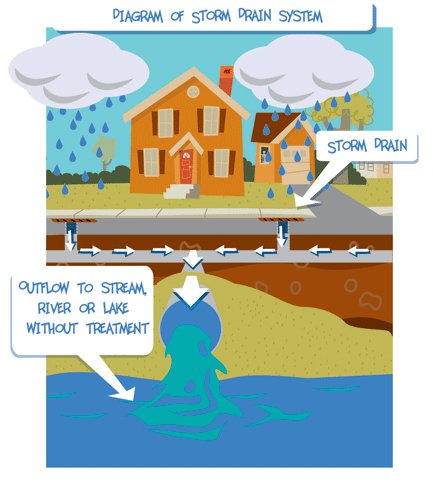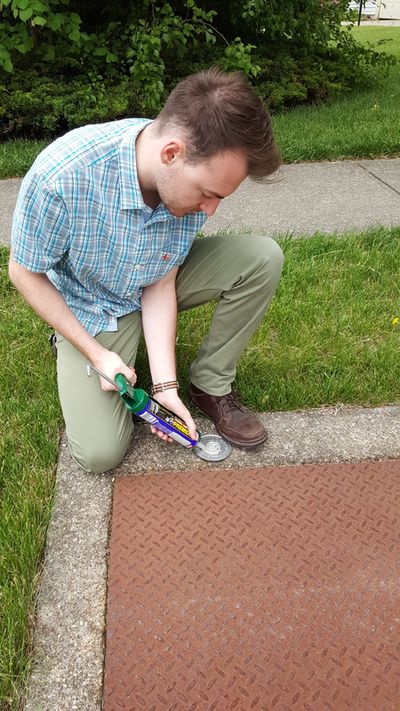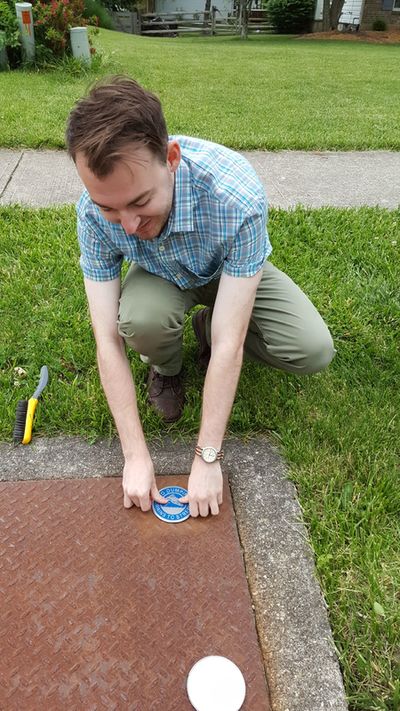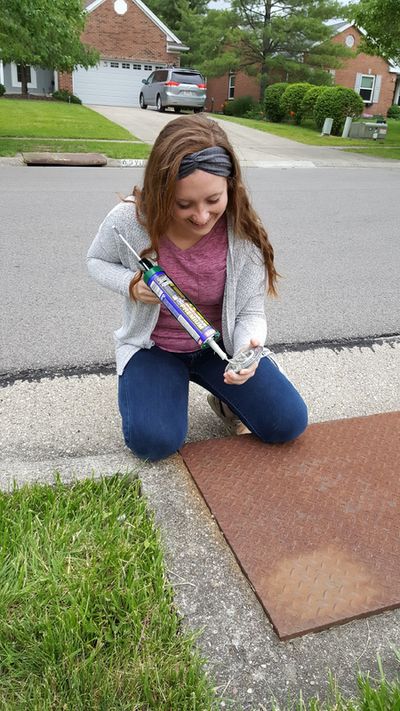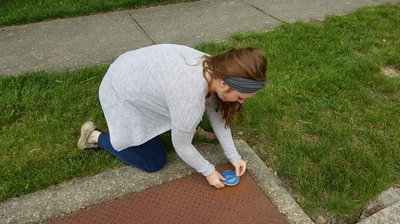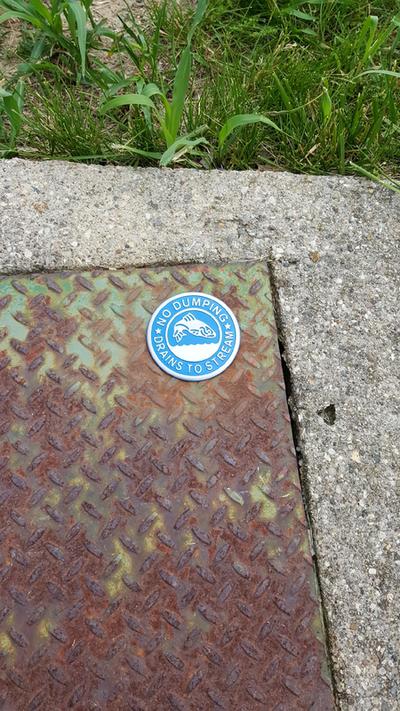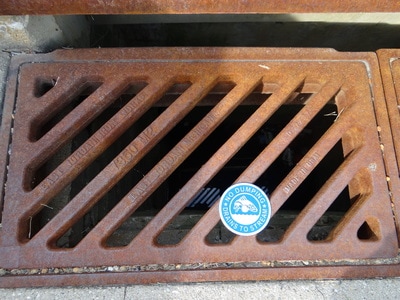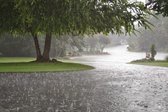 It's spring, so we are getting lots of rain lately. Rain always disrupts the land a bit and causes concern as it flows through yards, ditches and construction sites. But where does it all go? If you were paying attention in your second grade science class you learned about the water cycle. Some of the water soaks into the ground and recharges our groundwater. Smaller amounts of water evaporate to be collected in the sky creating more rain. But most of our rain water eventually makes its way to streams and rivers, oceans and lakes. 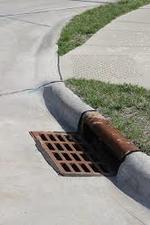 Our storm sewer systems do the job of collecting and conveying the rain water to its destination. These storm sewer systems collect the quickly accumulating rain and convey it down stream to make roads and bridges safe and to protect other property features such as houses, buildings and airports. There is a common misconception that the catch basins and yard inlets actually flow to a treatment facility. Some people think the water is taken to the same location that our sanitary sewers take and treat our sewage. This is not true. The catch basins and yard inlets you see around town flow directly to ponds, lakes, rivers and oceans. 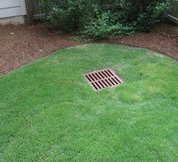 Because everything that is put into a storm sewer eventually makes it's way to our important natural features, you should never dump anything other than water into a catch basin or yard/street inlet. Never dump yard debris, pet waste, pesticides, fertilizers, vehicle wash, paints and other chemicals into a storm drain, The diagram below is a simplified diagram showing you how this system works. Tips for keeping our lakes and rivers clean!
Storm Drain Tagging Program Warren SWCD is committed to educating the general public about our storm sewer systems and protecting our wetlands, lakes, streams and rivers. One or our first jobs for our summer interns was installing storm drain tags! These tags let people know where the storm water flows and reminds them that dumping anything other than water will cause environmental pollution. If you are interested in helping us educate the public and would like to volunteer for our storm drain tagging program, please visit our Volunteer Opportunities page on our website.
12 Comments
I was out on my regular inspection last week when I drove past the historic Peters Cartridge superfund clean up site. I'm always slightly distracted when I drive around that narrow "s" curve and over the bridge as I strain to study the remnants of the historic structures. This day something different caught my eye. Hundreds, even thousands of white tubes were sticking up from the ground as if growing. I pulled into the bike path parking lot and took a closer look. Beautiful, healthy trees were flourishing from every single white tube. I becoming excited by the prospect of thousands of new tree seedlings! I stood there in awe of the shear volume of tree seedlings and curious how far this project reached. The tubes were lined up for as long as I could see so I started to walk down the path to investigate. I found out later, I was photographing approximately 2000 newly planted native tree seedlings. The project I stumbled upon was the result of a partnership between Little Miami Conservancy, DuPont, Sycamore High School students and numerous local volunteers. Little Miami Conservancy organized the work and collaborated the effort. I was tremendously impressed by what I saw and what seemed like never ending rows of native tree seedlings. The trail beautification effort was successful and even included a sturdy picnic table and additional wood chip lined trails along the river. Warren SWCD applaud the effort of every participant and are excited to see this area grow! Reforestation is the natural or intentional restocking of existing forests and woodlands that have been depleted, usually through deforestation. Why Reforestation is Important According to the United States Department of Agriculture forest Service, America's richly, diverse forests provide vital products and amenities to our society including quality habitat for wildlife, biodiversity of plant and animal communities, clean water, aesthetic benefits, and recreational opportunities. Timely reforestation following harvest or a major catastrophic event to restore forest cover on denuded lands is often important to maintaining forest ecosystems and deriving associated ecological, social, and economic benefits.
Reforestation is an element of a land stewardship ethic that includes growing, nurturing, and harvesting trees to meet specified resource objectives while conserving soil, air, and water quality in harmony with other resource management concerns. Reforestation following harvest or revegetating areas denuded by catastrophic fire or other natural disaster is often important to ensuring forest sustainability; it is a top priority for national forest management. Are you interested in the trees on or near your property? Ohio Department of Natural Resources Division of Forestry has a multitude of information and even assistance programs to guide you. Visit their Landowner Assistance page to learn more. The service forester for Area 12/Warren County is Pat Migliozzi, click HERE for his contact information and office hours. In addition, there is a nice publication that contains education information on managing and protecting Ohio's forest, wildlife and water resources. Subscribe HERE. |
Details
Warren County SWCD Staff BlogA blog to keep you informed on all the latest news at Warren County SWCD and in the conservation world. Archives
May 2024
Categories
All
|
|
|
Contact:PHONE: (513) 695 - 1337
EMAIL: [email protected] HOURS: Monday - Friday 7:30am - 4:00pm (except holidays) Connect:Warren County Soil & Water Conservation District Copyright © 2016
Warren SWCD Privacy Notice. Emails are serviced by Constant Contact. Constant Contact's Privacy Notice. |
